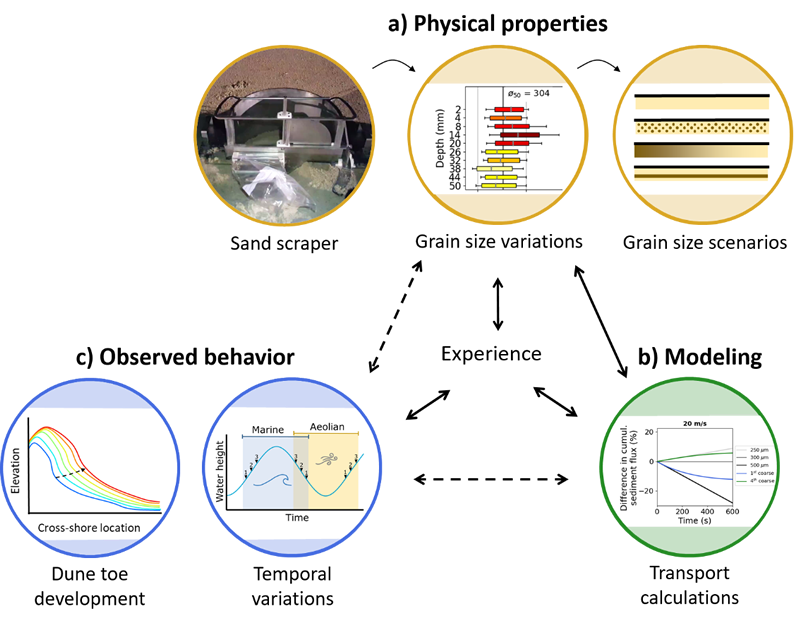C.O. van IJzendoorn1*, C. Hallin1,2, A.J.H.M. Reniers1, S. de Vries1
1 Delft University of Technology; 2 Lund University, Sweden
*corresponding author:
Introduction
Sediment transport processes in coastal systems are extremely dynamic and complex. For example, bed properties vary spatially and temporally as forcing conditions like waves and wind change over time. Simultaneously, sediment transport both depends on the bed properties and alters the bed properties. It is nearly impossible to study or simulate the full variability and interaction between different coastal processes. However, we believe that a systematic strategy to unifying the knowledge exchange between different academic and applied research approaches can generate new insights into coastal dynamics.
Connecting academic and applied approaches through the adapted Burland Triangle
Guidance on the application of newly gained insights and the role of modeling are provided by the Burland Triangle (Burland, 1987). We have adapted the Burland Triangle that is commonly used in geotechnical engineering into a framework that fits the coastal context (ABT; Figure 1). We use the ABT to create effective interaction between different academic and applied approaches based on (a) measurements of physical properties, (b) numerical modeling and (c) coastal evolution observations. As an example, we show how field measurements of grain size variability on a beach (a) can inform generic model scenarios that can be used to evaluate the effect of grain size on aeolian sediment transport simulations (b). These simulations show that the effect of grain size variability on aeolian sediment transport may be limited under certain conditions. This finding helps to interpret and predict (c) coastal dune development. For future work, the ABT can be used as a guide to ensure that diverse approaches are integrated and that they contribute to building experience within coastal research and engineering.

Figure 1: The implementation of recent work within the adapted Burland Triangle (ABT) which was modified from Burland (1987) to fit the coastal research and engineering context. Dashed arrows indicate potential connections between components.
References
Burland, J. (1987). The teaching of soil mechanics - a personal view. In Proc. 9th ERCSFME, Dublin (pp. 1427–1447).
I. Surname1*, F.N. Another-Surname2 , Y. Next-Surname2
1 University Name, Country; 2 Organization Name, Country
* Corresponding author: mail.name@organization.org


